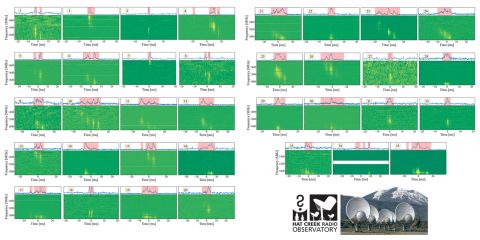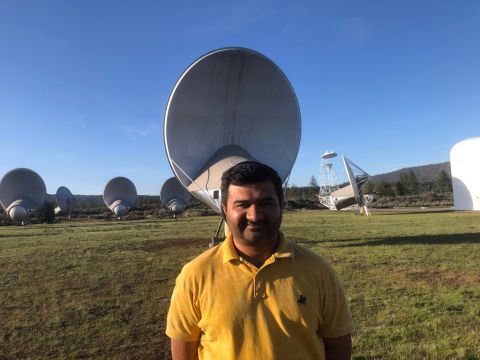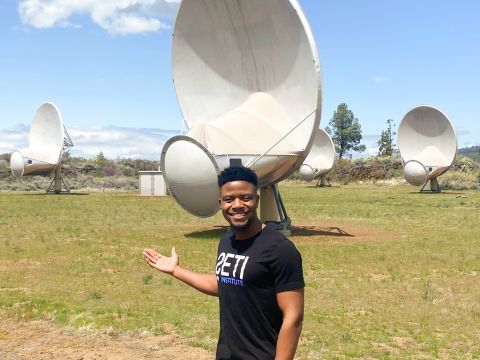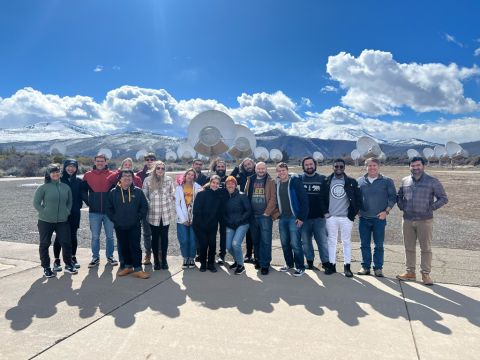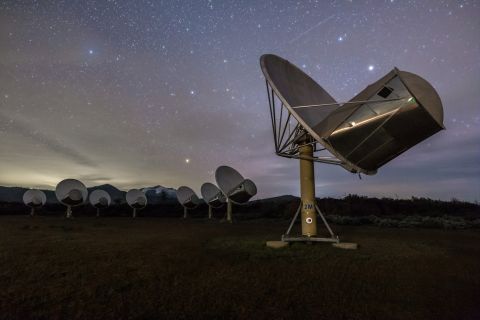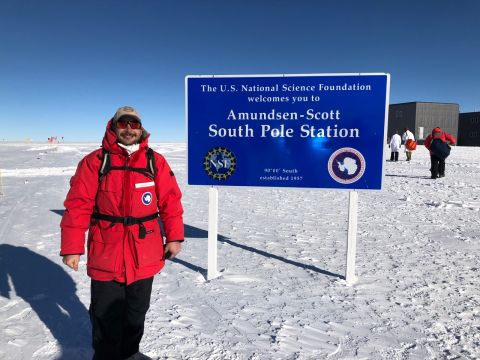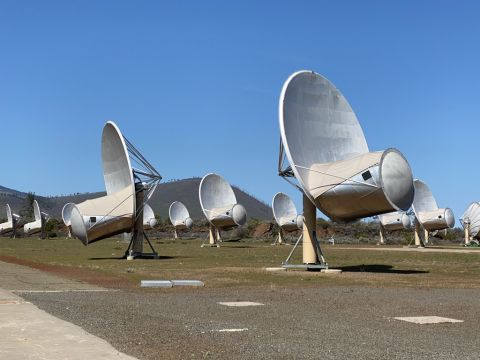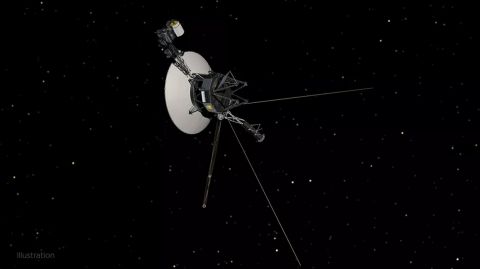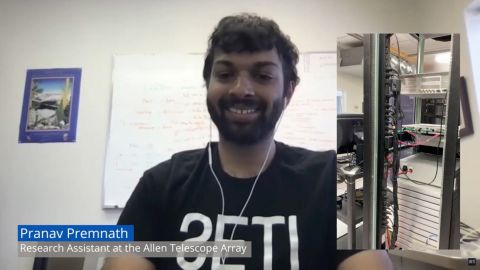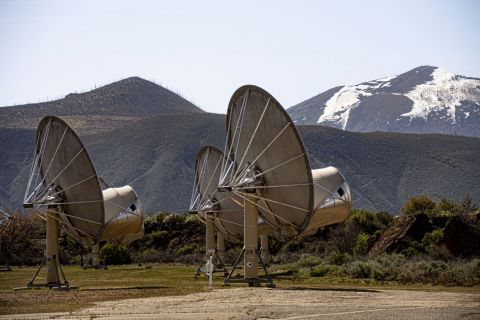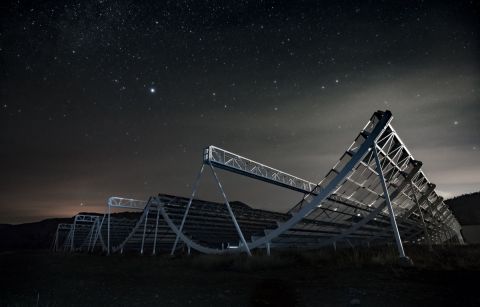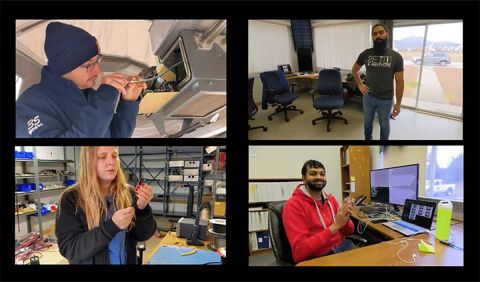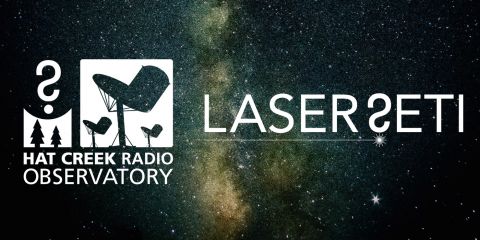
SETI
SETI is a generic acronym that stands for the Search for Extraterrestrial Intelligence. Scientists doing SETI experiments are looking for proof – not merely of life elsewhere – but of intelligent beings in other star systems.
How is it done?
Scientists long ago realized that we can’t find aliens by climbing into rockets and zipping off to other planetary systems. Such galactic galivanting is standard fare in movies and on television, a circumstance that has convinced many people that it’s something humans will be doing real soon now. But the enormous distances to the stars (even the nearest is 7,000 times farther than Pluto) means that we simply aren’t about to visit the aliens. Warp drive is a lovely idea, but no more than that.
And while some people think that the extraterrestrials, with their advanced technology, may be able to come here, this is not a popular idea among most scientists.
Consequently, most SETI these days eschews rockets, and relies on radio telescopes – massive antennas outfitted with highly sensitive and specialized receivers. The idea is simple: Forget the rockets and bring on the photons. Let signals beamed via radio (or light) do the traveling.
Radio is a great way to send information over the incredible distances between the stars; it easily passes through the dust and gas that suffuse space, and it does so at the speed of light (about 20,000 times faster than our best rockets.)
So, most SETI of the past 60 years has involved using large antennas to try and eavesdrop on any radio signals aliens might be transmitting.
There are also SETI experiments done with specially designed optical systems that search for flashing laser light beamed into space by other societies to convey information, to propel their rockets, or to just ping other star systems to see if anyone is home.
Note that SETI experiments do not broadcast. They just try to pick up signals that might already be threading the galaxy.
Who thought of SETI?
While technology pioneers such as Nikola Tesla and Guglielmo Marconi believed they could use radio to pick up signals from Martians (and both thought they had actually heard some Red Planet residents!), modern SETI dates from 1959. In that year, two physicists, Phillip Morrison and Giuseppe Cocconi, cooked up a very simple thought experiment. They imagined taking the world’s most powerful radar transmitter, and aiming it at a large, receiving antenna. Of course, if you did this little experiment in your back yard, the big antenna would have no difficulty picking up the signal from the radar transmitter. But then, in their minds, the two physicists slowly separated the transmitter and receiver. They wanted to know how far apart they could be and still reliably establish a radio link.
To their surprise, it turned out that this setup would work even when the transmitter and the receiver were separated by light-years of distance!
In other words, even with the radio technology we had in the 1950s, it was theoretically possible to use radio for signaling across distances comparable to those between the stars. This remarkable calculation prompted the two scientists to write up a paper suggesting that maybe intelligent aliens were using radio to communicate, and that we should look for such signals.
The first one to actually do any looking was astronomer Frank Drake. In 1960 he used an 85-foot diameter antenna in Green Bank, West Virginia to hunt for signals that might be coming from two very nearby star systems. In the two weeks of his experiment, Drake didn’t hear any alien transmissions. But his modest effort, known as Project Ozma, was the beginning of modern SETI.
Why hasn’t SETI picked up any alien signals?
Some people think that, after six decades of searching, the fact that SETI researchers have yet to pick up a signal from space might mean something. Perhaps the aliens don’t want to broadcast in our direction (maybe we’re not worthy!) Others think that the apparent silence means that there are no intelligent beings out there, and humans are the smartest things in the galaxy, a circumstance that many readers might find comforting or possibly self-evident.
But there’s a more reasonable explanation for the fact that SETI receivers have so far heard nothing that’s clearly extraterrestrial. Namely, the experiments have simply not examined enough of the sky. Or perhaps the antennas don’t have enough sensitivity, or maybe they’ve not been tuned to the correct frequency. So, if you buy into any of these explanations – which maintain that we haven’t found any aliens simply because we haven’t tried hard enough – then our future strategy is obvious. We simply have to be patient and continue to press the search.
Said another way, we continue to assume that the trillion or so planets in the Milky Way house some transmitting societies, but our experiments have to continue and continue to improve in order to succeed in picking up a signal.
There are countless other explanations for the “great silence.” Some of these are sociological (the aliens don’t find us interesting or worthy) while others are paranoid (broadcasting into space is dangerous, so the aliens don’t do it.) However, the real reason that SETI has yet to find any convincing signals might only become clear once we’ve detected something.
Who funds SETI?
Following Frank Drake’s pioneering experiment (see above), John Billingham, a British physician working at the NASA Ames Research Center in Mountain View, California was inspired to start a small NASA project to do SETI in a systematic way. Over the course of a dozen years, this focused effort developed expertise, hardware and software. The NASA project was just beginning its survey of the sky when it was canceled in 1993 by a vote in the U.S. Senate.
Since that time, all SETI in the United States has been funded by private donations.
- Seth Shostak



